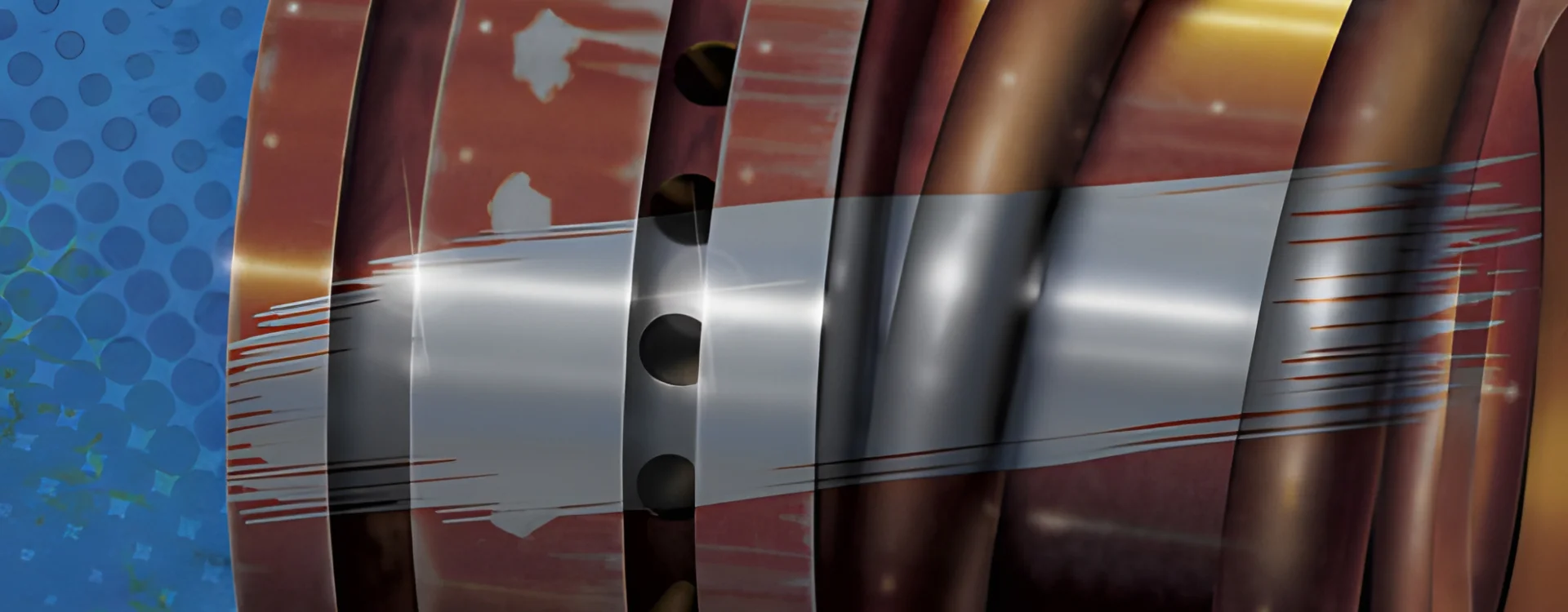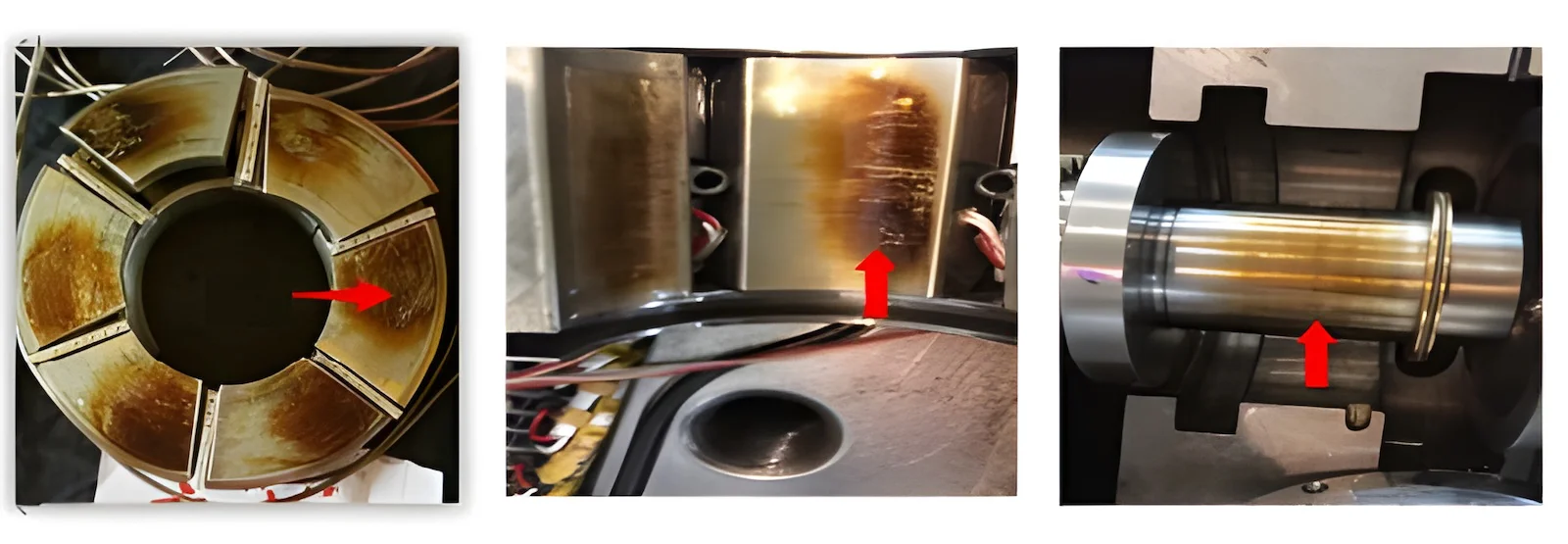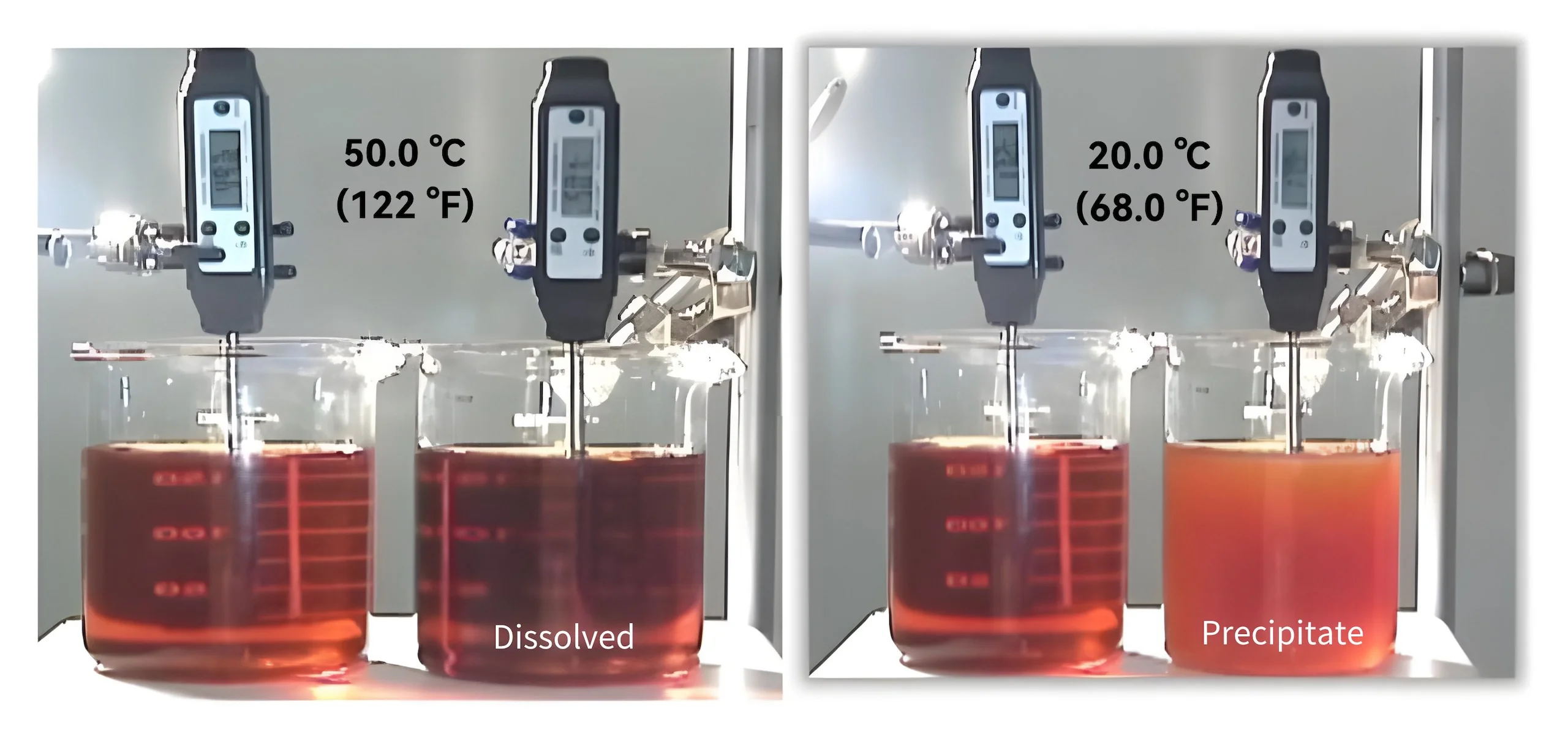- Химический: По мере старения масла происходит множество химических реакций. Окисление масла приводит к образованию многочисленных продуктов разложения, включая нерастворимые частицы и кислоты. Тепло и присутствие металлических частиц (железо, медь) ускоряют процесс. Кроме того, высокоаэрированные масла гораздо более подвержены окислению.
-Термический: Когда пузырьки воздуха попадают в масло, может произойти серьезное повреждение масла из-за условий, известных как PID (дизельирование под давлением) или PTG (термическая деградация под давлением). Локальные температуры превышают 538℃, когда пузырьки воздуха разрушаются под высоким давлением, что также приводит к термической деградации.
- Механический: «Сдвиг» происходит, когда молекулы масла разрываются при их перемещении между движущимися механическими поверхностями.
Полимеризация происходит, когда продукты окисления и аддитивные реакции объединяются и создают длинноцепочечные молекулы с более высокой молекулярной массой. Эти молекулы поляризованы. Скорость молекулярной полимеризации зависит от температуры и концентрации побочных продуктов окисления.
Это указывает на способность растворять молекулы в растворе, на которую напрямую влияет температура. Поскольку побочные продукты окисления непрерывно создаются, жидкость близка к точке насыщения.




